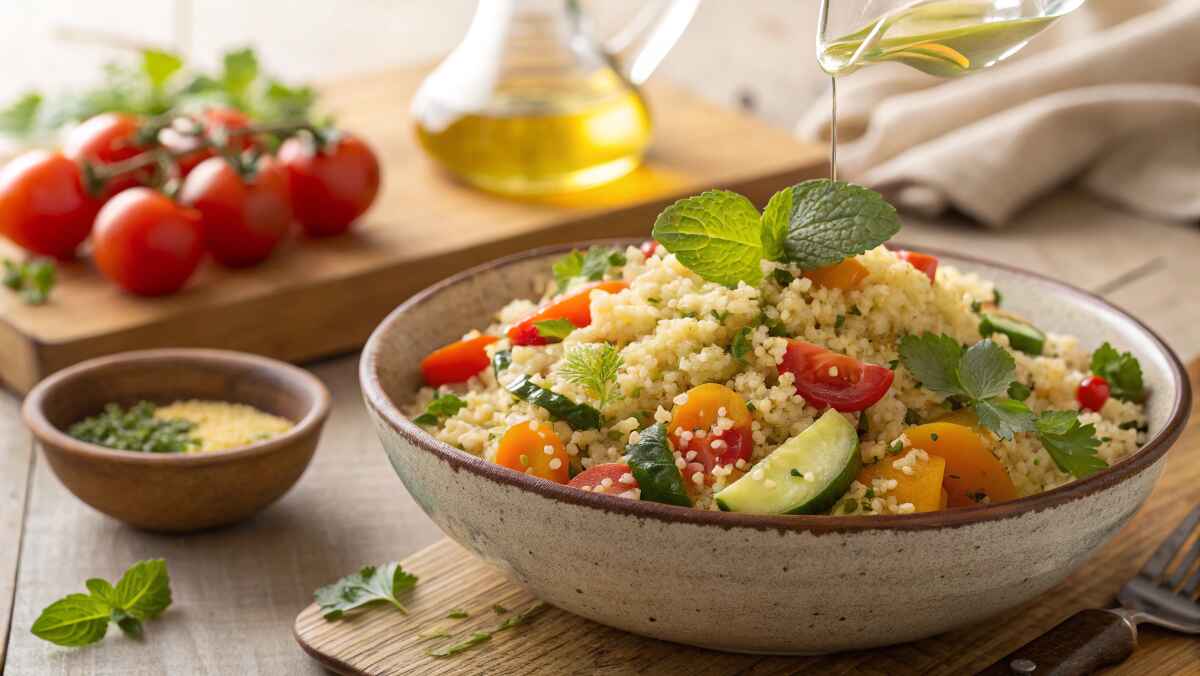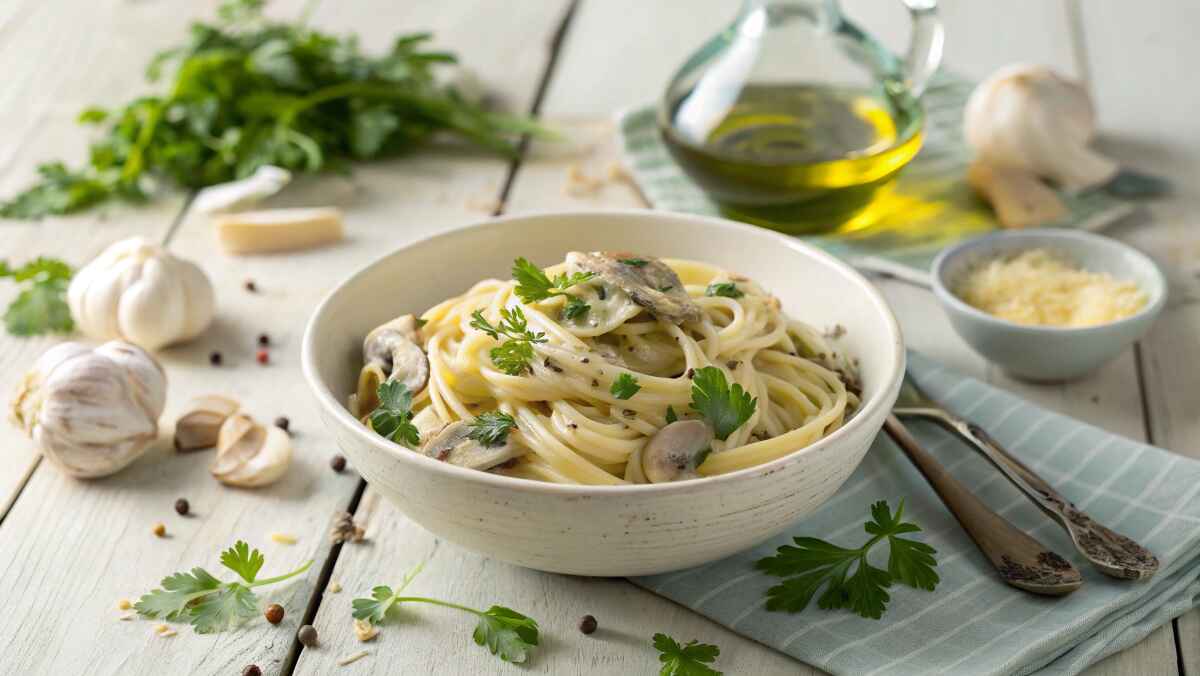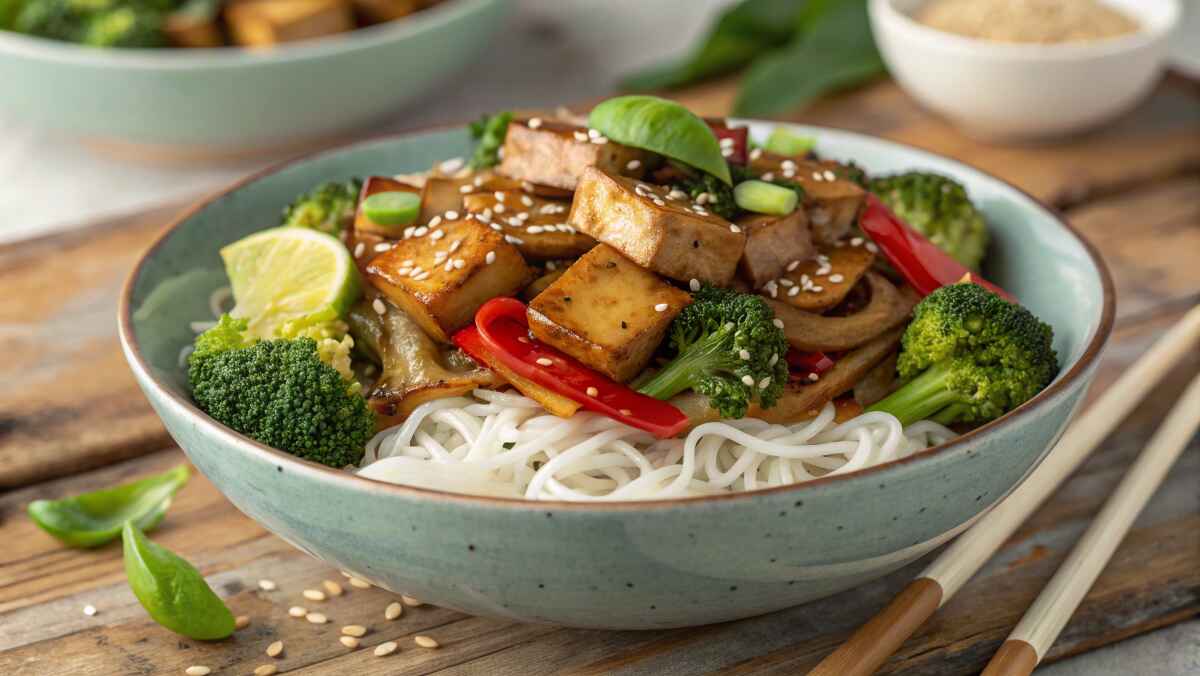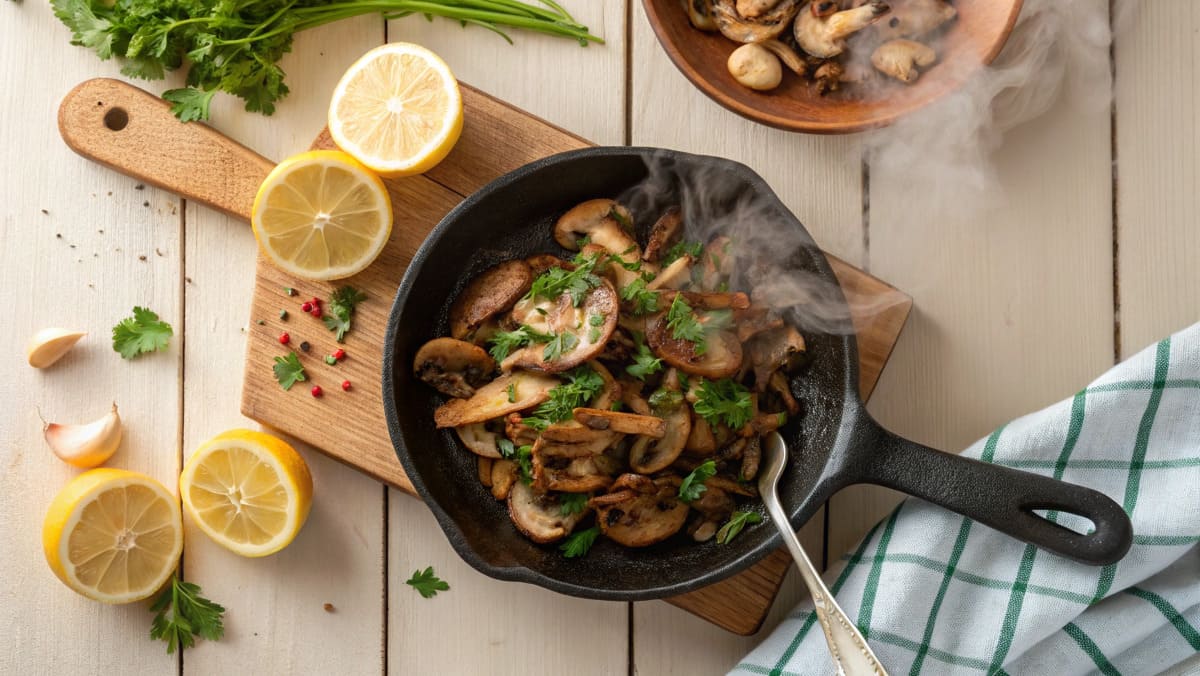Couscous is a staple in Mediterranean and Middle Eastern cuisine, often used in salads, side dishes, and stews. Its light, fluffy texture and ability to absorb flavors make it a favorite ingredient worldwide. However, if you’re following a gluten-free diet, you may be wondering: Is couscous gluten-free?
The short answer is no—traditional couscous is made from durum wheat semolina, which contains gluten. For those with celiac disease, gluten intolerance, or a wheat allergy, consuming regular couscous can lead to serious health issues.
Fortunately, there are several gluten-free couscous brands and substitutes that allow you to enjoy the same texture and versatility without the gluten. In this guide, we’ll explore the best gluten-free couscous brands, delicious substitutes, and easy recipes to help you recreate classic couscous-based dishes.
Is Couscous Gluten-Free? Understanding the Basics
Traditional couscous is made from wheat semolina, which is naturally high in gluten. This means it’s not safe for people with gluten sensitivities or celiac disease. Even pearl couscous (also called Israeli couscous) is made from semolina flour, making it unsuitable for a gluten-free diet.
For those unfamiliar with gluten and its effects, the Celiac Disease Foundation explains that even trace amounts of gluten can trigger an immune response in individuals with celiac disease, causing inflammation, digestive distress, and long-term intestinal damage.
If you’re looking for healthier alternatives, consider Naturally Gluten-Free Noodles, which offer an easy swap for couscous in certain recipes.
Are There Gluten-Free Couscous Options?
While traditional couscous contains gluten, there are now a few certified gluten-free couscous options available. However, these tend to be less common and slightly different in texture from wheat-based couscous.
Top Gluten-Free Couscous Brands to Try
If you’re looking for certified gluten-free couscous, consider these options:
- Streit’s Gluten-Free Pearled Couscous
- Made from tapioca starch, potato starch, and egg whites.
- Mimics the chewy texture of Israeli couscous.
- Best enjoyed with savory seasonings and vegetables.
- Gefen Gluten-Free Couscous
- Certified gluten-free by GFCO and kosher for Passover.
- Slightly pricier than traditional couscous but widely available online.
- Lieber’s Gluten-Free Couscous
- Made with potato starch and eggs.
- Harder to find in regular grocery stores, but available in kosher shops.
- Goldbaum’s Israeli-Style Gluten-Free Couscous
- Made from tapioca starch, potato flakes, and spices.
- Great alternative for pearl couscous dishes.
Since gluten-free couscous brands can be challenging to find, many people turn to substitutes that offer a similar texture and taste.
Best Gluten-Free Couscous Substitutes
If you can’t find gluten-free couscous, try these nutritious and delicious alternatives:
- Quinoa – High in protein and fiber, with a slightly nutty flavor.
- Rice – A versatile option that works well in many couscous-based recipes.
- Riced Cauliflower – A low-carb alternative that absorbs flavors well.
- Millet – An ancient grain with a mild, slightly sweet taste.
- Buckwheat Groats – Nutty and naturally gluten-free, despite its name.
For more ideas on gluten-free grain substitutes, check out this Naturally Gluten-Free Noodles Guide.
How to Cook Gluten-Free Couscous and Its Substitutes
Each gluten-free couscous substitute requires a different cooking method:
✔ Quinoa: Rinse thoroughly, then cook in a 2:1 ratio of water to quinoa for about 15 minutes.
✔ Rice: Use a 2:1 water-to-rice ratio and simmer until tender.
✔ Riced Cauliflower: Sauté in a pan with olive oil for 5 minutes.
✔ Millet: Toast slightly, then cook with water or broth until fluffy.
Tips for Enhancing the Flavor
To make gluten-free couscous more flavorful:
- Cook it in vegetable or chicken broth instead of water.
- Add olive oil, garlic, or shallots while cooking.
- Mix in herbs like parsley, cilantro, or mint for freshness.
- Use spices like cumin, turmeric, or paprika for extra depth.
For a complete gluten-free meal, pair it with a Gordon Ramsay Caesar Salad Recipe.
Delicious Gluten-Free Couscous Recipes
Here are detailed recipes for each gluten-free couscous dish, with additional seasoning tips and variations to enhance flavor!
1. Mediterranean Gluten-Free Couscous Salad

Ingredients (Serves 4)
✔ 1 cup quinoa, rinsed and drained
✔ 2 cups water or vegetable broth
✔ 1 cup cherry tomatoes, halved
✔ 1 cucumber, diced
✔ ½ cup crumbled feta cheese
✔ ¼ cup red onion, finely chopped
✔ ¼ cup kalamata olives, sliced
✔ 2 tbsp extra virgin olive oil
✔ 1 tbsp lemon juice
✔ 1 tsp dijon mustard
✔ 1 clove garlic, minced
✔ ½ tsp dried oregano
✔ Salt and black pepper, to taste
✔ Fresh parsley or mint, for garnish
Instructions
- Cook the quinoa – In a saucepan, bring 2 cups of water or broth to a boil. Add quinoa, reduce heat, and let simmer for about 15 minutes, until the water is absorbed. Fluff with a fork and let it cool.
- Prepare the dressing – In a small bowl, whisk together olive oil, lemon juice, dijon mustard, minced garlic, oregano, salt, and pepper.
- Assemble the salad – In a large mixing bowl, combine cooked quinoa, cherry tomatoes, cucumber, red onion, and olives.
- Add dressing – Pour the dressing over the salad and mix well.
- Add feta and garnish – Gently fold in crumbled feta cheese and sprinkle fresh parsley or mint on top.
- Chill & serve – Let the salad sit for 10 minutes for flavors to blend. Serve cold or at room temperature.
Tips & Variations
✔ Add grilled chicken or shrimp for a protein boost.
✔ Substitute feta with vegan cheese for a dairy-free version.
✔ Add a handful of pomegranate seeds for sweetness.
2. Moroccan-Style Gluten-Free Couscous with Vegetables

Ingredients (Serves 4)
✔ 1 cup millet
✔ 2 cups vegetable broth or water
✔ 1 tbsp olive oil
✔ 1 carrot, diced
✔ 1 zucchini, diced
✔ ½ cup chickpeas, drained and rinsed
✔ 1 small onion, finely chopped
✔ 2 cloves garlic, minced
✔ ½ tsp ground cumin
✔ ½ tsp ground coriander
✔ ½ tsp paprika
✔ ¼ tsp ground cinnamon
✔ Salt and pepper, to taste
✔ ¼ cup raisins or chopped dried apricots
✔ ¼ cup toasted almonds or pine nuts
✔ Fresh cilantro or parsley, for garnish
Instructions
- Cook the millet – In a pot, bring 2 cups of broth to a boil. Add millet, cover, reduce heat, and simmer for 15 minutes. Remove from heat and let sit for 5 minutes, then fluff with a fork.
- Sauté the vegetables – In a large skillet, heat olive oil over medium heat. Add onions and garlic, cooking until fragrant. Add carrots and zucchini, sautéing until tender.
- Add spices – Stir in cumin, coriander, paprika, cinnamon, salt, and pepper. Mix well to coat the vegetables.
- Mix in chickpeas & millet – Add chickpeas, raisins, and cooked millet. Stir everything together and let cook for 5 more minutes.
- Garnish & serve – Top with toasted almonds or pine nuts and fresh cilantro or parsley. Serve warm.
Tips & Variations
✔ Add a squeeze of fresh lemon juice for a zesty touch.
✔ Serve with grilled lamb or tofu for extra protein.
✔ Replace raisins with dried cranberries for a tart flavor.
3. Riced Cauliflower Tabbouleh Salad

Ingredients (Serves 4)
✔ 3 cups riced cauliflower (fresh or frozen)
✔ 1 cup fresh parsley, finely chopped
✔ ½ cup fresh mint, finely chopped
✔ 1 large tomato, diced
✔ ½ cucumber, diced
✔ ¼ cup red onion, finely chopped
✔ 3 tbsp extra virgin olive oil
✔ 2 tbsp lemon juice
✔ 1 clove garlic, minced
✔ Salt and black pepper, to taste
✔ ¼ tsp ground cumin (optional)
Instructions
- Prepare the cauliflower – If using fresh cauliflower, pulse florets in a food processor until it resembles rice. If using frozen, thaw and drain excess water.
- Sauté or steam (optional) – Lightly sauté riced cauliflower in a dry pan for 3 minutes to remove moisture or use raw for a crunchier texture.
- Prepare the dressing – In a small bowl, whisk together olive oil, lemon juice, minced garlic, salt, pepper, and cumin (if using).
- Mix ingredients – In a large bowl, combine riced cauliflower, parsley, mint, tomato, cucumber, and red onion.
- Add dressing – Pour the dressing over the salad and toss to combine.
- Chill & serve – Let the salad rest for 10 minutes before serving for best flavor.
Tips & Variations for Riced Cauliflower Tabbouleh Salad
This gluten-free tabbouleh is light, refreshing, and packed with fresh herbs, making it a perfect side dish or light meal. However, you can easily customize it to suit your taste preferences or dietary needs. Here are some delicious ways to enhance the recipe:
✔ Add crumbled feta or goat cheese for a creamy texture – The salty, tangy notes of feta cheese or the smooth, slightly tangy taste of goat cheese complement the fresh herbs and acidity of the dressing beautifully. This addition creates a more balanced and satisfying dish, especially if you prefer a richer texture.
✔ Toss in chickpeas for added protein – For a heartier and more filling meal, add a handful of cooked chickpeas. They provide a good source of plant-based protein and fiber, making the dish more satisfying as a main course. If you want extra crunch, try roasting the chickpeas with a little paprika and olive oil before adding them.
✔ Use lime juice instead of lemon for a tangier flavor – If you prefer a slightly sharper acidity, substitute fresh lime juice instead of lemon. Lime juice enhances the brightness of the dish and pairs exceptionally well with mint and parsley. It’s a great variation if you want to add a slight citrus twist.
✔ Incorporate pomegranate seeds for sweetness and crunch – If you love a mix of sweet and savory flavors, sprinkle fresh pomegranate seeds over the salad. They add a burst of juicy sweetness and a subtle crunch that contrasts well with the riced cauliflower.
✔ Enhance the texture with nuts or seeds – For extra crunch and healthy fats, try adding:
- Toasted almonds (sliced or slivered)
- Crushed pistachios for a Middle Eastern touch
- Sunflower seeds or pumpkin seeds for a nut-free option
✔ Boost the spice level with chili flakes or sumac – If you enjoy a slight spicy kick, sprinkle in red pepper flakes or sumac. Sumac adds a tangy, slightly smoky flavor that enhances the lemon-lime dressing.
For a heartier dish, try pairing it with Homemade Gluten-Free Meatballs. The combination of fresh tabbouleh and juicy, protein-packed meatballs creates a well-rounded meal that is both satisfying and nutritious.
FAQs: Common Questions About Gluten-Free Couscous
- What is the best gluten-free couscous alternative?
➡ Quinoa is the closest in texture and taste. - Can I make my own gluten-free couscous at home?
➡ Yes, you can pulse cauliflower in a food processor for a grain-free option. - Are meatballs gluten-free?
➡ Check out this Are Meatballs Gluten-Free? Guide for recipes and tips. - Does gluten-free couscous taste the same as regular couscous?
➡ No, but many substitutes come close when properly prepared.
Final Thoughts on Gluten-Free Couscous
While traditional couscous is not gluten-free, there are many excellent alternatives and gluten-free brands available. Whether you choose quinoa, millet, or specialty gluten-free couscous, you can still enjoy delicious, healthy meals.
Pairing couscous with gluten-free dishes like Butternut Squash Lasagna or Homemade Gluten-Free Meatballs can make for a satisfying and nutritious meal.
Be sure to experiment with different grains and try new recipes to find your perfect gluten-free couscous alternative! 😊




